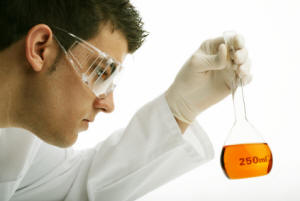WHAT IS IMPETIGO?
Impetigo is a skin infection that is usually caused by one of two types of bacteria: group A streptococcus or staphylocccus aureus. It is one of the most common skin infections among children, especially of preschool and age, and is highly contagious. During the summer months, when the weather is warm and humid, bug bites, poison ivy exposures and other skin injuries abound. Children are typically more vulnerable than adults to the bacteria, which can lie harmless on the skin until they find break to enter and spread. This is because children, who already have developing immune systems, may also have lower hygienic standards and often scratch a bug bite or irritation, giving impetigo an invitation to enter and infect the skin.
Impetigo manifests itself through blisters and sores on the hands and face, although it can infect any part of the body. The two types of bacteria that cause impetigo manifest themselves in different ways. The most common cause of impetigo, staphylococcus aureus, results in large blisters that start out clear, then turn cloudy. They don’t burst easily, and they tend to remain intact for a fairly long period of time.The second type of bacteria, streptococcus, is characterized by a group of tiny blisters that burst. After they have burst, they leave small, wet areas of skin that can weep fluid. The fluid crusts over, leaving the affected area covered in what appears to be crystallized honey or brown sugar.
The three types of impetigo are called impetigo contagiosa, bullous impetigo and ecthyma. The first and most common, impetigo contagiosa, usually starts around the nose and mouth and is characterized by the small red sores seen with the streptococcus strain of bacteria. Those affected may also have swollen lymph nodes around the area of infection. With bullous impetigo, the infection is often caused by the staphylococcus aureus bacteria, causing large, painless blisters, usually on the trunk of the body or on the legs or arms. The blisters, which last longer than the impetigo contagiosa infection, can be accompanied by fever, diarrhea and body weakness.
Ecthyma is a more serious form of impetigo. The infection spreads deep into the dermis, or second layer of skin. It starts out with painful, fluid-filled blisters that progress to deep ulcers, primarily affecting the legs and feet. A yellow-gray crust thickly covers the infected area. Swollen lymph nodes can accompany this type of impetigo. Unfortunately, these deep blisters usually result in scarring.
Minor cases of impetigo are usually treated with an antibiotic ointment such as Bactroban and loosely covered with bandages. This helps to keep the infection from spreading or being transferred from one child to another. Keeping the area clean and the child’s fingernails trimmed and clean also helps to keep the infection from spreading. Hand washing and use of antibacterial soap also can help, as well as making sure that clothing or bedding that has come into contact with the affected area is washed in hot water.
Complications from impetigo include poststreptococcal glomerulonephritis (PSGN), a kidney inflammation that can lead to kidney damage. This usually affects boys aged three to seven. This complication commonly shows up approximately two weeks after the primary infection and is characterized by facial swelling, decrease in urination, blood in the urine, high blood pressure and pain in the joints. Meningitis, an infection and inflammation of the membranes and fluid surrounding the brain and spinal chord, is another complication of impetigo.


